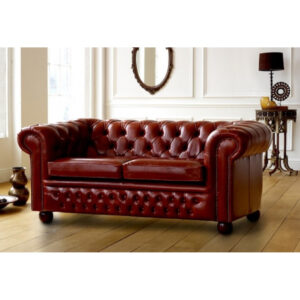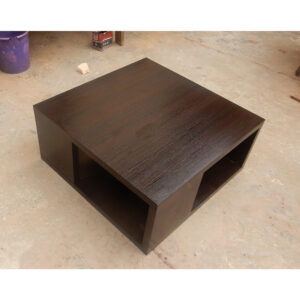Keeping furniture clean not only makes the piece more attractive but lengthens its lifespan immensely.
While cleaning a whole house’s worth of furniture can represent a major undertaking, it doesn’t have to be a hassle.
In most cases, regular dusting and vacuuming in combination with semiannual deep cleaning will keep your furniture looking fantastic.
How to Clean Wooden Furniture
While experts have varying opinions on the care of wood furniture, it usually depends on the finish of the piece thus we recommend consumers ask for specific care and cleaning guidelines when purchasing new or old furnishings.

Dusting
Don’t avoid dusting furniture. Frequent dusting removes airborne deposits that build up in a filmy layer and can scratch the surface.
Clean, dry, soft cloths or feather dusters will effectively remove dust; however, to avoid scattering the dust into the air, where it floats until landing back on furniture surfaces, dampen the cloth very slightly.
Tools for Dusting
Classic feather duster
An ostrich-feather duster removes dust from easily damaged, delicate surfaces, such as silk lampshades, mirrors, picture frames and art, and fragile collectibles.
Treated cloths
For dusting, soft, non-scratching cloths pick up and hold dirt. Use them in place of silicon sprays, which are not recommended for fine wood furniture.
Lamb’s-wool duster
These contain lanolin, which attracts dust and makes it cling to the cleaning tool. They’re also effective for dusting carved or turned areas that clothes can’t reach. A long handle makes them ideal for hard-to-reach areas, including light fixtures and ceiling fans.
Soft, lint-free cloths
Clean cotton T-shirts or diapers are commonly used. Dampen them slightly to help trap dust.
Terry towels
Use a clean dry towel to remove any moisture left from dusting with a damp cloth.
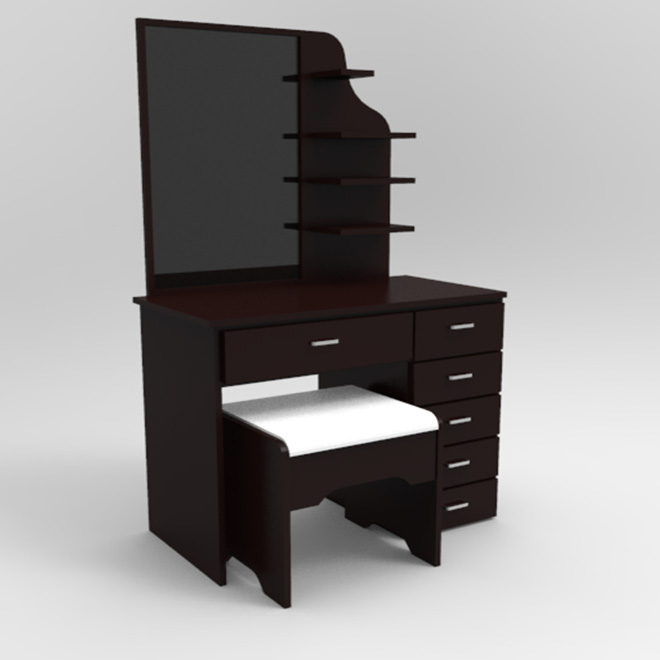
Cleaning
Never use all-purpose cleaning sprays unless your furniture has a plastic coating, such as the kind used on kitchen tables and children’s furniture.
You’ll usually want to avoid cleaning wood with water. However, sticky spots may need to be treated with soap and water. Here’s how: dip the cloth in mild soap or detergent dissolved in water, wring the cloth nearly dry, and wipe the area. Rinse and immediately dry with a clean, soft cloth.
Oil polishes, cleaners, and furniture oils protect the wood by making the surface more slippery; they do not offer a hard protective layer.
Products that contain a high percentage of oil make the surface smear, showing fingerprints. Avoid polishing with pure olive oil, which smears and attracts dust.
Most commercial spray and liquid furniture polishes contain silicone oil, which provides some protection. If you have used sprays and polishes in the past or suspect that furniture has been polished with them, be aware that residues can interfere with refinishing and may need professional attention.
Homemade recipe for cleaning wood
Some experts recommend reviving grimy wood furniture with a mixture of equal parts olive oil, denatured alcohol, gum turpentine, and strained lemon juice. Apply with a soft cloth and buff with a clean cloth.
Waxing
Typically during manufacture, varnish, polyurethane, or shellac is applied to wood to protect the surface. Applying wax or polish protects the manufacturer’s finish and helps to reduce surface scratches.
Wax provides a hard finish and long-lasting protection doesn’t smear and is more durable than sprays or polishes.
Use paste wax or liquid wax made specifically for furniture. Depending on use, paste wax finishes may last as long as two years. Liquid wax is easier to apply but leaves a thinner coating; it may need to be applied more frequently than paste wax.
Always apply wax in light coats, rubbing it into the surface with the grain. Allow to dry and buff to a clear shine with a soft cloth.
Freshen Finds
If a vintage piece has a lingering smell, the air outside is on a warm, dry day. Shade from direct sunlight.
Pour talcum powder or baking soda over the surface to absorb odors.
Place a shallow pan of charcoal briquettes inside the drawers.
Rub the upper edge of the sticking drawers with a white candle.
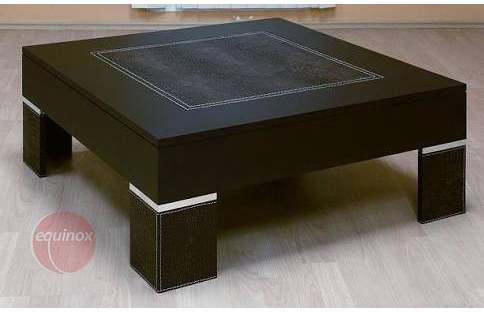
Wood Surface Scratch Removal
If the top of the wood furniture is slightly scratched, apply paste wax or use a felt-tip touch-up pen.
Old Polish Removal
Knowing how to clean old wood furniture that has a decades-old buildup of polish will help you revitalize an antique. Steep two tea bags in boiling water. Let the tea cool to room temperature, take a soft cloth, wring it out in the tea until it’s damp, and wash the wood. The tannic acid from the tea is wonderful for maintaining wood. You’ll be surprised at how the wood will shine.
Water Stains Removal
Here’s how to remove water rings from wood where someone has put a hot or cold drink directly on a table. Put some non-gel toothpaste on the spot and rub it with a soft cloth till the stain is lifted. For stubborn stains, mix equal parts baking soda and toothpaste. Wipe the toothpaste off with a clean damp cloth and dry thoroughly.
Erase Difficult Marks
To remove an ink mark, mix 1 tablespoon of baking soda and 1 teaspoon of water into a thin paste. Apply to the stain and rub gently with a soft cloth until the stain disappears. Wipe the toothpaste off with a clean damp cloth and dry thoroughly.
Once your furniture is clean, wipe a layer of wood polish on it to preserve the finish and add shine. You can use commercially prepared lemon oil. You can also make a simple polish by mixing 1 cup of olive oil with 1/4 cup of white vinegar. Pour it on a soft cloth and work it into the wood, wiping it with the grain. Buff till shiny. Knowing how to clean wood furniture will help you keep your possessions looking lovely, for longer.
How to Clean Leather Furniture
Leather sofas add a touch of elegance to your home décor. Cleaning and maintaining these luxurious sofas, however, is a tricky task as you cannot just wipe them down with a wet cloth.
Moreover, harsh cleaners can easily ruin your expensive sofa. Even bleach and ammonia-based cleaners should be avoided. Although leather is a durable material, it is porous in nature.

Thus, you can either make a gentle yet effective cleaner at home or use the leather cleaner recommended by your sofa manufacturer. It is usually suggested to clean leather furniture every three months, or at least twice a year.
Steps for Cleaning
- Vacuum clean the sofa with a soft brush attachment. Make sure it sucks the dirt out of all the crevices otherwise the dust and grime could be rubbed into the sofa when you wipe it with the cleaning solution.
Dust particles are abrasive in nature. Hence, they can damage the material when they come in contact with moisture.
- Create a cleaning solution by mixing equal parts of water and white vinegar. Alternatively, you can mix a few drops of commercial leather cleaner in water.
- Dip a soft cloth (preferably a microfiber cloth) in this solution and wring it out so that the cloth is damp, not completely wet.
- Wipe the entire sofa with this cloth while rinsing the cloth in the cleaning solution when necessary. It is best to start cleaning from the top and work your way down.
- Dry the sofa with a clean towel. Do not use a blow dryer for this purpose as it is likely to dehydrate the leather.
- For conditioning, mix one part of white vinegar and two parts of linseed oil or flaxseed oil. Using a soft, clean cloth, apply this mixture on the sofa in broad, circular motions. Leave on overnight.
- The next day, buff the sofa with a clean rag to restore its shine.
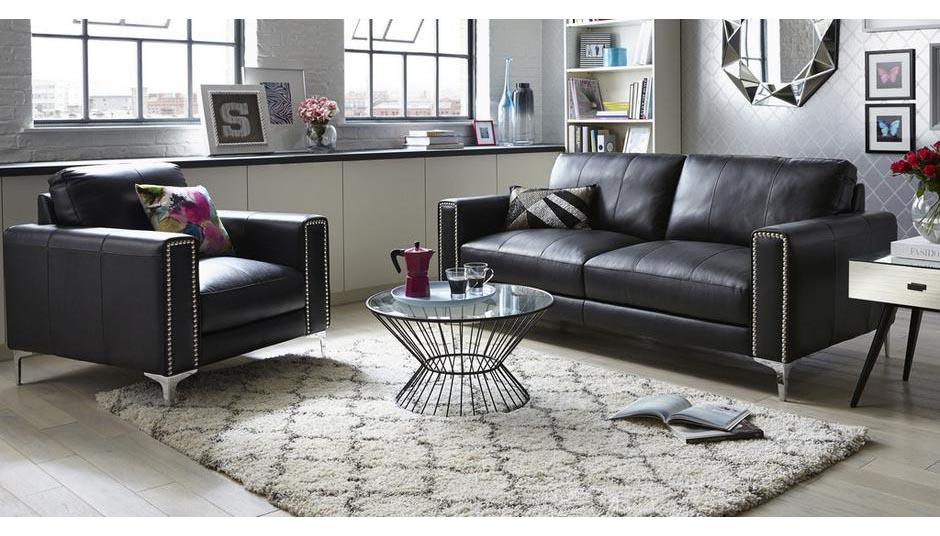
Apart from the vinegar solution, you can clean your leather sofa with moisturizing soap (such as Dove) and water (bring it to lather and then wipe). Test the cleaning solution on an inconspicuous spot before using it on the entire sofa.
Some even suggest cleaning leather furniture with saddle soap. On the downside, it is believed that repeated use of saddle soap tends to dissolve leather over a period of time.
How to Clean Stains on a Leather Sofa
To remove mold and mildew, clean the affected area with a combination of equal parts of water and rubbing alcohol.
Permanent marker stains can be removed by spraying an aerosol hairspray on the stains. If your little one has scribbled something on the sofa with a ballpoint pen, then try rubbing it off with eucalyptus oil. Rubbing alcohol, too, can be used to clean ink stains. You just need to dip a cotton swab in rubbing alcohol and rub it on the stain.
Non-acetone nail polish removers, baby wipes, and even toothpaste (white toothpaste, not gel) can also help you get rid of stains from your leather sofa. Make sure you test the option you choose; on a hidden area to ensure that it does not fade the color. If you want a safer option, use leather wipes or foam leather cleaners. Leather wipes, however, are likely to leave a residue on your leather furniture.
For dark-colored stains on a light-colored leather couch, rub the stains with a paste of one part each of lemon juice and cream of tartar. Leave it on for about 10 minutes. Again take a small amount of this paste and rub it on the affected area. Finally, wipe it off with a damp sponge.
To get rid of grease stains, sprinkle some baking soda on the affected area and dust it off after a few hours. Baking soda will absorb the oil and leave your sofa clean.
Additional Tips
- For regular weekly cleaning, you can simply wipe the sofa with a dry cloth or dust it off with a feather duster. If it is used heavily then you may consider cleaning the sofa with a vacuum cleaner. Plus, turn and fluff the cushions on a regular basis to avoid wrinkles on them.
- Do not expose your leather sofa to sunlight; it can age and dry the leather, thereby leading to discoloration and cracking. In fact, keep it at least two feet away from sources of heat, including air conditioning sources and heating vents.
- Attend to any spills (even water spills) on the sofa immediately, or else the fluid will penetrate the dye and leave spots. So, blot the fluid as soon as possible. Do not wipe it, though; it may spread the liquid and stain the surrounding area too.
How to Clean Fabric Furniture
Velvet Fabric Furniture
Choosing velvet furniture is choosing to make a bold style statement in your space—there’s no ignoring its soft sheen, rich color, and innate elegance.
But velvet’s commanding presence also means that any discoloration or stains are that much more visible.

Materials:
Vacuum
Absorbent cloth
Soap and water or upholstery cleaner
Soft brush
Vacuum the fabric
In terms of regular maintenance, all you need to do to the item itself is give it a good dusting. “We recommend regular vacuuming,” says White. “A soft brush can also loosen surface dirt and brush it away.”
Tackle spills right away
If someone does happen to spill their cocktail on your couch, White suggests blotting the area immediately with a clean, dry absorbent cloth.
Test cleaning products
If a dried stain is staring you in the face and you just can’t help but do something about it, test any cleaning products (even basic soap and water) on a hidden spot to ensure it doesn’t ruin the fabric. Mix soap and water to create a sudsy solution. Use a soft cloth to blot the stain with the suds. Let the fabric dry completely.
Brush the fabric
“Once the velvet is dry, use a soft, dry brush in the direction of the pile to restore its direction and loft,” says White.
Next up! Sit back, relax, and enjoy your good-as-new upholstery.
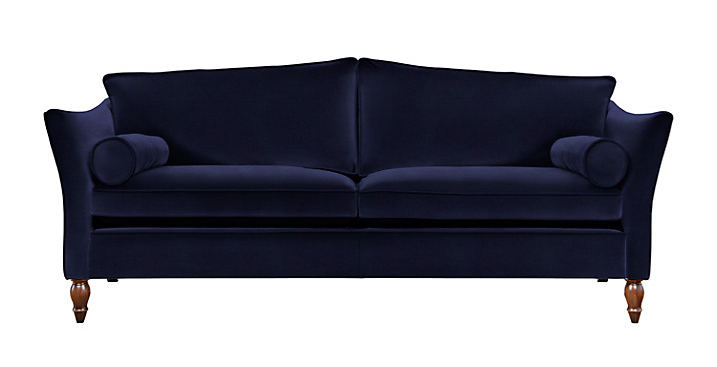
How to Clean Silk Fabric Furniture
Silk fabric is made of natural protein threads which contribute to its strength and lustrous appearance. These qualities make it an attractive choice for upholstery. Silk requires special care when cleaning to avoid damaging the fabric. It should be hand-washed with mild detergent for the best results.
Materials Needed
- Mild laundry detergent
- White vinegar
- Cloth
- Towel
Dampen a cloth with cool water and add two or three drops of mild detergent.
Dab the dirty area with a damp cloth. Press lightly multiple times to remove any stains. Do not rub, as this can cause color fading or damage to the fabric.
Rinse the cloth in cool water to remove any soap residue. Wring it out and dab the area you just cleaned. Repeat as often as necessary to remove every trace of soap.
Press a dry towel onto the silk fabric to soak up any excess water. Allow airing to dry.
How to Clean Cotton Fabric Furniture
Cotton sofa upholstery offers a breathable, natural alternative to animal-based or man-made fabrics.
Like other Sofa materials, a cotton sofa requires cleaning from time to time, whether it’s removing dust or pet hair, or dealing with food spills.
Routine maintenance such as dusting helps keep the cotton fabric in pristine condition. The level of cleaning needed and the methods used vary based on the nature of the situation, such as removing cat hair or dealing with gum.
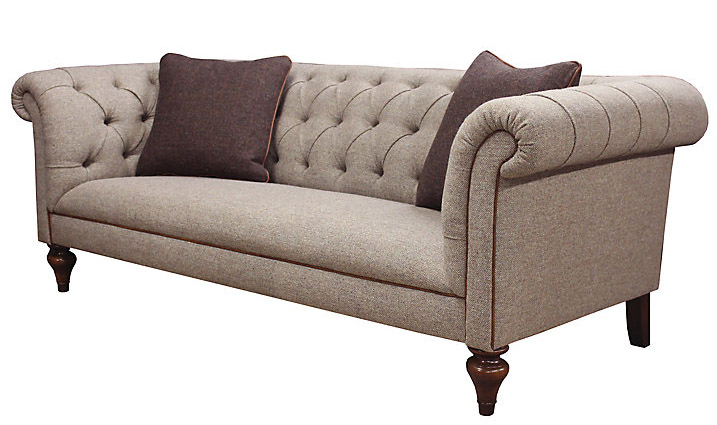
Materials Needed
- Rubber gloveLint roller or packaging tape
- A vacuum cleaner with an upholstery brush attachment
- Plastic spoon or knife
- Damp dye-free cloths
- Mild dish soap
- Ice cubes
- Zippered sandwich bag
- Remove pet hair in a hurry by placing a rubber glove on your hand and rubbing the sofa surface gently with your hand. The rubber clings to the fur and clumps it together in balls or rolls, making it easier to remove. A lint roller or piece of packaging tape wrapped around your fingers sticky-side out removes stubborn pet hair or lint from the sofa.
- Remove the sofa cushions, if possible, and take them outside, smacking them to remove loose dust and debris. Bring them back indoors and vacuum all sides of the cushions using an upholstery brush attachment. Vacuum the entire sofa, including the area beneath the cushions and the sofa back. If cushions are affixed to the sofa, a crevice attachment for the vacuum cleaner reaches debris that has fallen between the cushion.
- Treat a spot created by spilled or dropped food, such as chocolate or cake icing, by first scraping up as much of the dried substance as possible with the edge of a plastic spoon, scraping inwards toward the spill rather than outwards, which may spread the substance. Dab the area with a dye-free cloth dipped into a bit of soapy water made with mild dish soap; using a non-dyed cloth ensures no color will transfer over to the sofa. Continue dabbing until the food substance is no longer visible, then wipe again with a damp cloth. Blot dry with paper towels or a dry cloth. Dab on a mild soapy solution to treat other stains as well, repeating the dabbing process until the spot is no longer visible.
- Remove chewing gum or sticky substances such as pine sap by placing several ice cubes in a zippered sandwich bag, and sealing the bag. Place the bag of ice over the spot until the gum or sticky material hardens. Scrape the hardened substance away with the edge of a plastic spoon or knife. If any remains, reapply the bag of ice, then chip away the remaining residue once it becomes hard.
Tips
If pets or children use the sofa, a slipcover helps keep the cotton upholstery clean.
Cotton is absorbent if not treated with protectants; keep foods and drinks away from the sofa if concerned about stains or spills.


